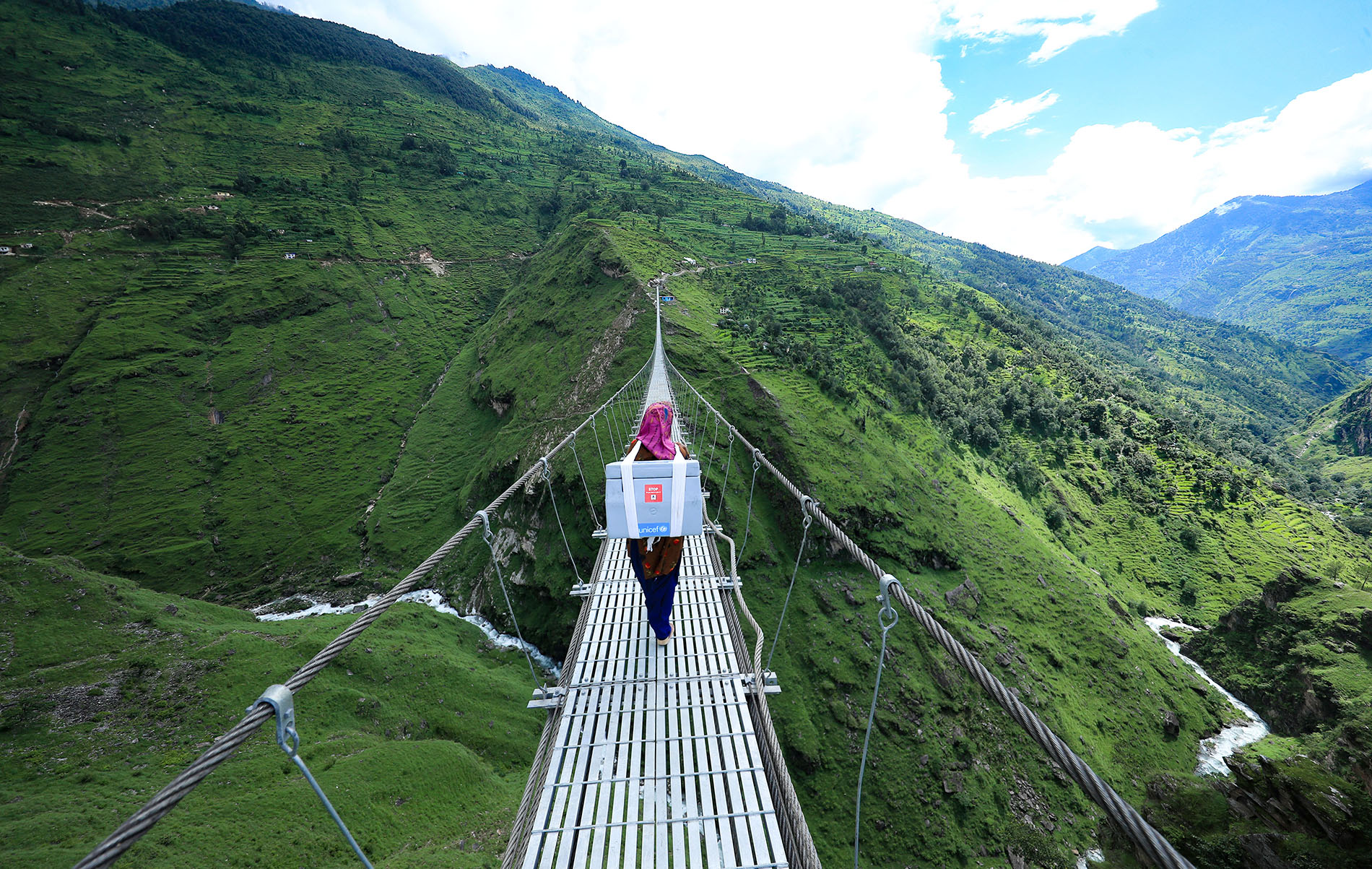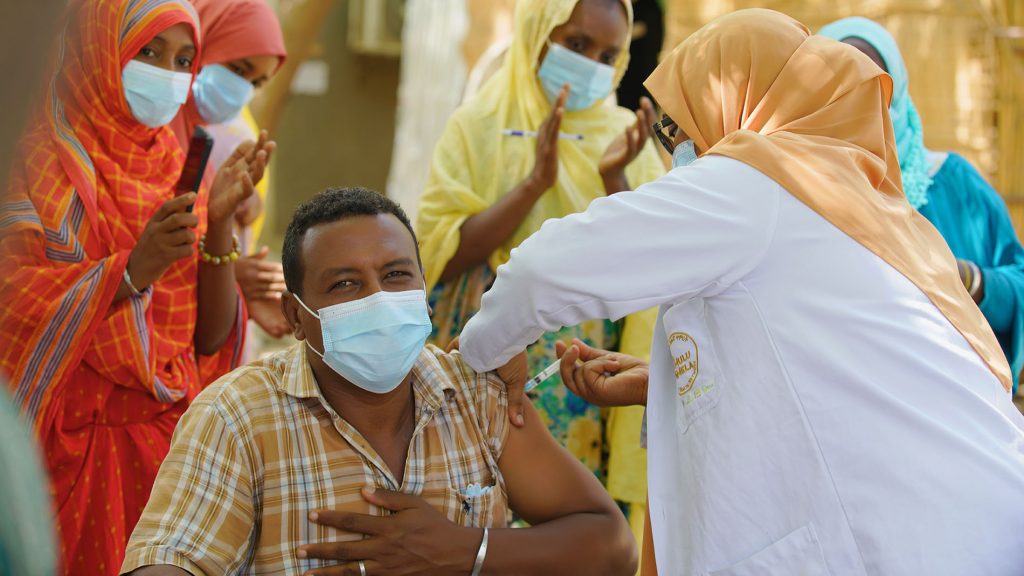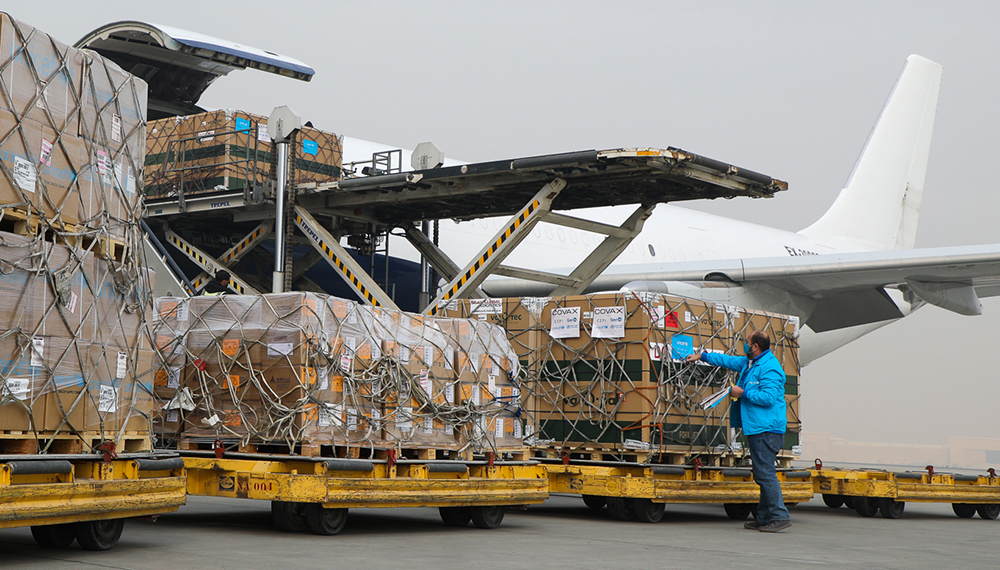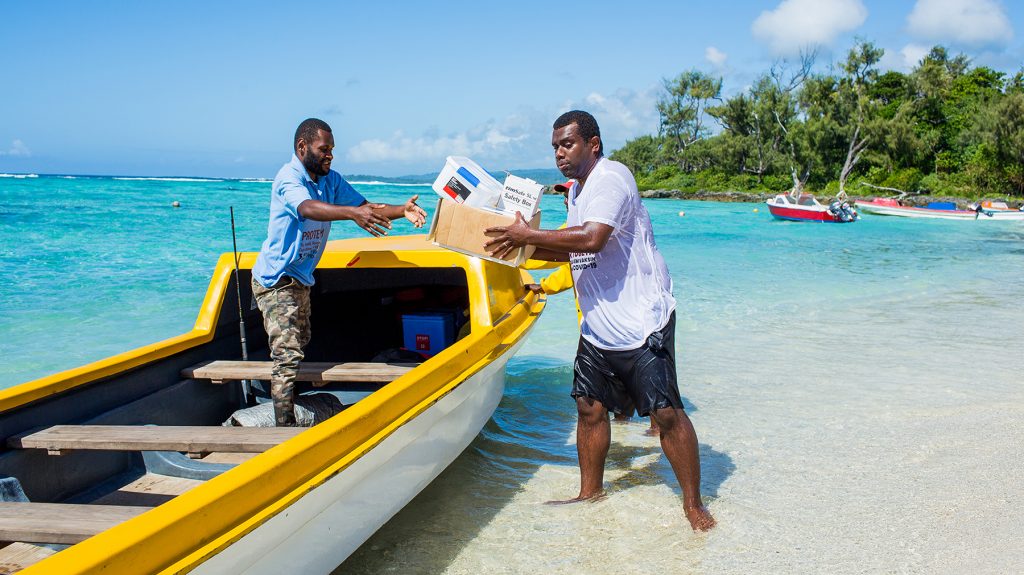
Technology sparks ‘turning point’ for getting COVID vaccines to many more people across the globe
When COVID-19 vaccines began arriving in Ghana in 2021, Mrunal Shetye and his colleagues scrambled to get the life-saving doses to millions of people anxious to protect themselves and their families. They juggled purchase orders, approval letters and countless other details as part of the ambitious global vaccine rollout.
“There were hundreds of emails on a single subject and at one point, we literally had a whiteboard to document which shipment was coming when,” says Shetye, chief of Health and Nutrition for UNICEF in Ghana. “The details were very difficult to track.”
A year later, the profusion of emails and document searches has yielded to a streamlined information hub built by UNICEF and Microsoft for COVAX, the global mechanism to help distribute COVID-19 vaccines in a more equitable way. The effort has delivered more than 1.5 billion doses to 146 countries in the largest vaccine rollout in the world. More than 80% of the doses have gone to low- and lower middle-income countries. COVAX is co-led by UNICEF, which manages procurement and supply; Gavi, the Vaccine Alliance; the World Health Organization; and the Coalition for Epidemic Preparedness Innovations.
With the information hub, Shetye can now call up a dashboard and see a single line item for a COVAX shipment and related documents. His colleagues at UNICEF’s Supply Division and his health partners in Ghana can see the same information so everyone is on the same page. The system helps him prepare for shipments, manage COVID-19 vaccine stocks and supplies, and assist health workers with vaccination campaigns throughout the country.
“The whole thing became just more manageable and understandable,” Shetye says.

A Ghana health manager, left, and UNICEF staffers examine a shipment of COVID-19 vaccines in Ghana. (Photo by Francis Kokoroko, courtesy of UNICEF)
Launched in 2021, the information hub, which tracks COVAX’s vaccine supply chain, has become a key part of the initiative’s mission to get vaccines to low- and middle-income countries that might otherwise be left behind. It’s brought efficient deliveries of COVID-19 vaccines and syringes to conflict settings like Syria and Yemen, and to remote places like the Himalayas in Nepal and the tiny Pacific island country of Vanuatu.
The platform also helps health and humanitarian workers collaborate across time zones and countries on deliveries to low-income countries like Ethiopia, Afghanistan and Rwanda, where COVAX’s 1 billionth dose landed in the Rwandan capital of Kigali in January of 2022.
Despite much progress, the need for the work is still vital. Many of the world’s 82 poorest countries have COVID-19 vaccination rates below 20%, according to The New York Times. In contrast, about two-thirds of the world’s richest countries have reached the World Health Organization’s goal of fully vaccinating 70% of their populations.
“The aim of COVAX is to make COVID-19 vaccines available to all of the populations, regardless of where they are and what the level of income of their countries is,” says Gemma Orta-Martinez, supply chain manager of Monitoring and Strategic Data at UNICEF. “The info hub is a critical tool that UNICEF and partners use to provide transparency and access to essential information.”

A doctor in Ethiopia receives a COVID-19 vaccine. (Photo by Tewodros Tadesse, courtesy of UNICEF)
In the early days of COVAX shipments, the lack of a transparent, cohesive view of the supply chain made the challenges of shortages, lockdowns and inadequate cold-chain storage even harder. UNICEF employees, no strangers to vaccine operations, had to use disparate, inefficient systems to monitor timelines and inventory that were constantly changing.
Musonda Kasonde, UNICEF regional chief of supply for the Middle East and North Africa, recalls the stress of trying to provide realistic delivery times for countries asking when vaccines were coming.
“One of the main challenges in the beginning was trying to understand who had what where,” she says. ‘’For me, having those dashboards and access to that information was really the turning point in our fight against the pandemic.”
The UNICEF platform also plays a critical role in helping countries turn vaccines into vaccinations, especially now that supplies and logistics have stabilized. Countries using the platform to prepare for shipments and manage inventory can more easily organize the storage, transportation, distribution, community outreach and health worker trainings needed to get vaccines into people’s arms.

COVID-19 vaccines arrive in Afghanistan. (Photo by Omid Fazel, courtesy of UNICEF)
“You can track what is coming,” says Kasonde. “You can make sure that the cold chain is in place and national regulatory requirements are in place, and then you have a much smoother delivery in country.”
The information hub came together as a collaboration between UNICEF’s Supply Division and Microsoft’s Tech for Social Impact team, which works with nonprofits. To respond quickly to the pandemic, the team tapped into Microsoft’s Disaster Response team, which places employees on volunteer technical missions that help organizations respond to crises like hurricanes and earthquakes.
The platform was a complex project requiring scalability, flexibility and security to handle vast amounts of sensitive global data. It needed rigorous identity management for hundreds of users with different levels of authorized access. It had to be easy to use. And it needed to launch quickly to address the unfolding health crisis.
Microsoft engineer Erik Hanson and architect manager Marialina Bello knew they wanted to do meaningful work during the pandemic and had the expertise and leadership skills for the job. They quickly volunteered.
“We were able to really bring the breadth of Microsoft and just say, ‘How can we help?’” says Hanson, who was the platform’s technical coordinator, while Bello served as primary mission coordinator. “What is most impressive is the speed we were able to rally a crew with different backgrounds and skillsets from around the world.”
Microsoft engineers in the United States, Italy and Australia worked with UNICEF engineers in Denmark and India to build the platform in a few months using Azure DevOps, GitHub, Power BI and other modern tools.
What is most impressive is the speed we were able to rally a crew with different backgrounds and skillsets from around the world.
“It’s easy to say, ‘Where’s my stuff?’ But in the supply chain context, there are many complicated answers, many definitions and a lot of moving parts that the info hub is tracking,” says Steve Jones, chief of the Operational Analysis and Technology Center at UNICEF. “Microsoft brought a great contribution with best practices and design choices, and we’ve learned quite a lot.”
Dorcas Noertoft, senior contracts manager for UNICEF’s Supply Division, says the visibility of data has reduced misinformation and friction that sometimes arise in large, global missions. Being able to see the same information as everyone else has helped “harmonize the narrative” of fighting the pandemic, she says.
“Having access to information is always one of those things that helps to build the trust,” says Noertoft, who manages COVID-19 vaccine contracts for COVAX. “Once there is trust, everybody has a sense of walking towards the same objective.”

Health care workers bring COVID-19 vaccines and supplies to Pélé island in Vanuatu. (Photo by Arlene Bax, courtesy of UNICEF)
She reflected on the progress of COVAX and how far it’s come since making its first international shipment in February of 2021. Like many people working with COVAX, Noertoft had watched a livestream of the historic milestone, when a plane carrying 600,000 vaccine doses landed in Ghana. She was moved by the joy and relief of Ghana officials who greeted the plane and posed for pictures on the tarmac.
As shipments continued to other countries, Noertoft also watched the information hub, where countries that received vaccines turned green on a map.
“I’ve worked with UNICEF for more than 20 years and just knowing what it takes to deliver to some of these places almost brings tears to my eyes,” she says. “It speaks to how complex and global this effort is, and to track our progress and see the numbers grow and see that green is amazing.”
Top photo: A health care worker in Nepal carries COVID-19 vaccines to a clinic in a remote part of the country. (Photo by Laxmi Prasad Ngakhusi, courtesy of UNICEF)

